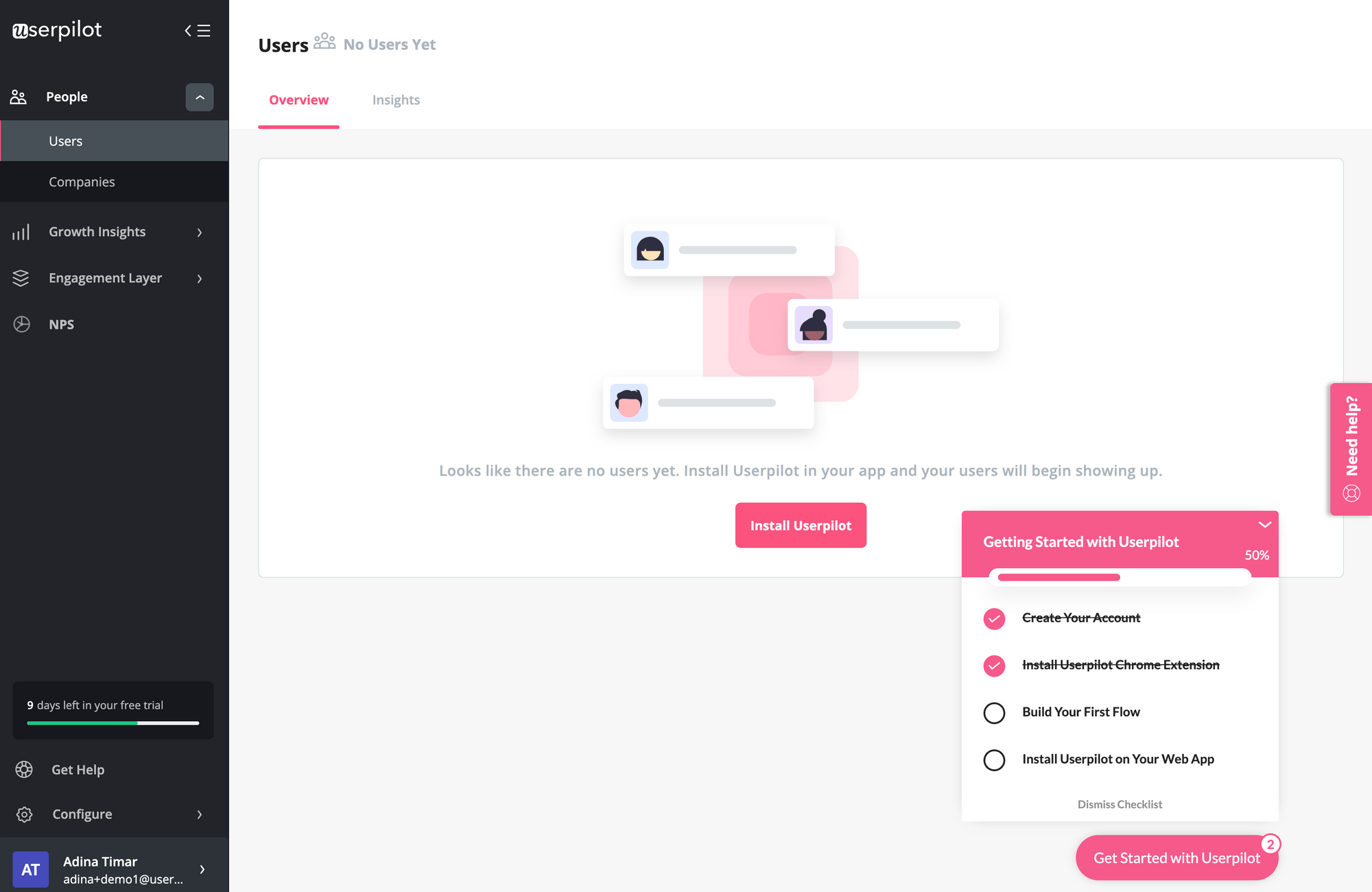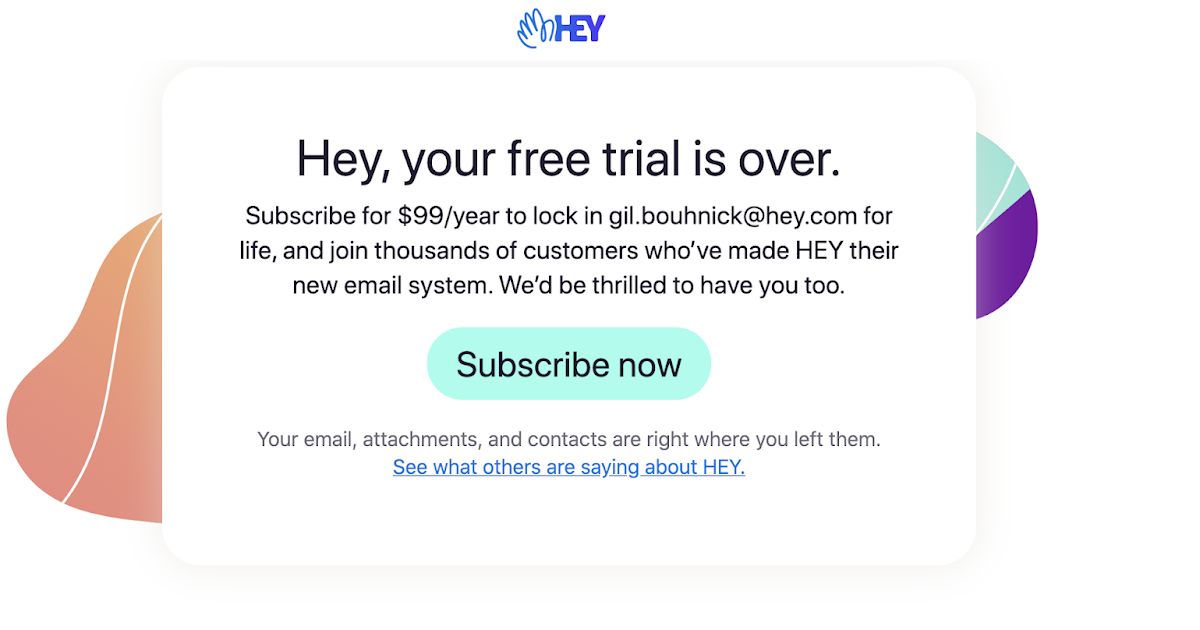Imagine you're at a buffet, and you have a limited amount of time to try as many dishes as you can. Would you take your time and try one dish at a time, or would you quickly sample a variety of dishes before time runs out? The same applies to SaaS companies' free trial periods. A shorter trial period can lead to a higher conversion rate, as users are more likely to try the product and see its value.

The Downsides of Long Free Trial Periods
Long free trial periods can have several downsides for SaaS companies:
| Trial Period Length | Conversion Rates |
|---|---|
| 14 days | 10% |
| 7 days | 15% |
| 3 days | 20% |
An experiment we ran for a SaaS customer

Shortening the Free Trial Period
By shortening the free trial period, SaaS companies can:

Implementing it
Determine the optimal trial length for your product:
The ideal length of a free trial period will depend on your product and industry. While some products may benefit from a shorter trial period of 7 or 14 days, others may require longer trial periods. Consider the following factors when deciding on the optimal trial length:
- The complexity of your product
- The time required for users to experience the full value of your product
- The industry standards for free trial periods
- Your competition's trial period length
Optimize your onboarding process:
Optimizing your onboarding process is a critical step in maximizing the effectiveness of a shorter trial period. A smooth and efficient onboarding experience will help users quickly understand your product's value and features. Consider the following tips to optimize your onboarding process:
- Provide clear instructions on how to use your product
- Offer video tutorials or live demos to walk users through the product
- Provide helpful prompts and tips throughout the onboarding process
Limit access to features:
| Product Type | Feature Limitations during Trial Period |
|---|---|
| Accounting software | Limit the number of transactions or invoices a user can create during the trial period. |
| E-commerce platform | Limit the number of products a user can list or the number of orders they can process. |
| Video conferencing | Limit the number of meeting attendees or the duration of the meetings during the trial. |
| Project collaboration | Limit the number of team members or collaborators a user can invite to a project. |
| Project management | Limit the number of projects a user can create |
| CRM | Limit the number of contacts a user can store |
| Email marketing | Limit the number of emails a user can send |
| Social media | Limit the number of social profiles a user can manage |
Another way to make the most of a shorter trial period is to limit access to certain features during the trial. This encourages users to upgrade to a paid subscription to unlock additional features. Consider the following strategies for limiting feature access:
- Offer a free trial version with limited functionality
- Limit access to premium features during the trial period
- Provide users with a taste of premium features but limit the number of times they can use them
Use email marketing to drive conversions:
| Email Type | Best Practices |
|---|---|
| Welcome email | Introduce your product, highlight key features and benefits, and provide links to resources and support. |
| Reminder email | Send a reminder email a few days before the trial period ends, highlighting the value of your product and encouraging users to upgrade. |
| Social proof email | Use social proof, such as customer testimonials or case studies, to show users the benefits of your product and encourage them to upgrade. |
| Education email | Provide educational content, such as tutorials or webinars, to help users get the most out of your product during the trial period. |
| Incentive email | Offer incentives, such as discounts or extended trial periods, to users who upgrade to a paid subscription during the trial period. |
| Post-trial follow-up email | Send a follow-up email after the trial period ends, thanking users for trying your product and encouraging them to upgrade. Provide resources and support to help them succeed. |
Email marketing can be a powerful tool for converting trial users into paying customers. Consider the following email marketing strategies to encourage users to upgrade:
- Send targeted emails that highlight the benefits of upgrading
- Provide helpful tips and tricks to help users get the most out of your product
- Offer incentives such as discounts or additional features for upgrading during the trial period
Monitor and optimize your conversion rates:
Finally monitor your conversion rates and optimize your strategy over time. Keep track of the following metrics to evaluate the effectiveness of your trial period:
- Number of trial users
- Number of converted users
- Conversion rate
- Revenue generated from trial users
Consider experimenting with different trial lengths, onboarding strategies, and email marketing tactics to optimize your conversion rates over time.
Example of Shorter Free Trial Periods in Action
Let's take the example of Grammarly, a popular writing assistant tool that offers a 7-day free trial period. The company's marketing team realized that 7 days was sufficient time for users to experience the product's value. By shortening the trial period, Grammarly was able to:
- Increase the sense of urgency among users, leading to higher conversion rates.
- Streamline the sales process by providing a more concise trial period.
- Encourage users to commit to the product sooner rather than later.
More examples: - Zoom: The popular video conferencing platform offers a free trial that lasts only 7 days. This limited time period creates a sense of urgency and encourages users to take advantage of the trial period.
- Headspace: The meditation app offers a 7-day free trial period, which has helped them attract over 65 million users.
SaaS companies should consider shortening their free trial periods to increase conversion rates. Long trial periods can diminish the sense of urgency among users, prolong the sales process, and be unnecessary if the onboarding process is effective.
By providing a shorter trial period, SaaS companies can increase the sense of urgency, streamline the sales process, and provide a more focused evaluation period.

